Track and Rails Vs. Lifelines: Which Fall Protection System is Best for You?
If you're looking for a new fall protection system, you will probably encounter two options: rigid rail and lifeline systems. Which one is best for your application? We break down those key factors in this article.
Do you need a reliable fall protection system at your job site, but don’t know which one is best for your application?
Not having the proper fall protection on site not only leaves the door open for heavy OSHA fines, but it can also delay your projects and cause serious injuries or death to your workers.
At Mazzella, we specialize in selling and installing the two most popular fall protection systems on the market: rigid rail and lifeline systems.
During your research process, you may be confused as to which system is best for your application, and investing in one takes up lots of time and money.
This comprehensive article will break down the basics of lifeline and rigids track systems and what separates them, helping you decide the best fit for your fall protection needs. We will go over:
- What Is a Lifeline System?
- What Is a Rigid Fall Protection System?
- How Can You Decide Between a Lifeline and Enclosed Track?
- Is Different Training Required for Lifeline and Rigid Systems?
- How Can You Improve Your Fall Protection Practices?
What Is a Lifeline System?
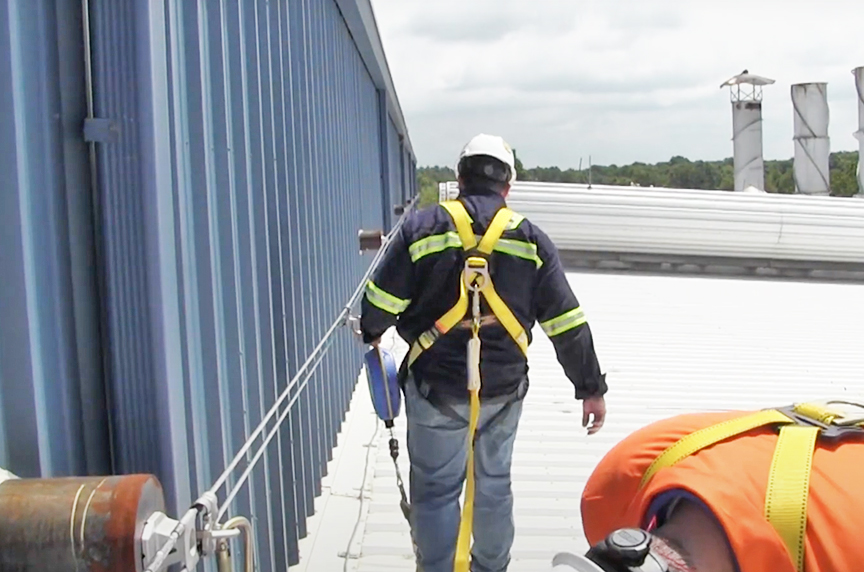
An engineered lifeline is a fall protection system which allows workers to safely move along rooftops, machinery, ladders, and other elevated working surfaces.
Paired with a proper harness and lanyard or self retracting lanyard, engineered lifelines dramatically improve worker safety at heights. With a length ranging from 4’ all the way to 4,000’, lifeline systems can be a great fit for a variety of industries and applications.
Typically mounted as a permanent overhead solution, lifelines systems are common in areas that lack existing anchor points for a personal tie-off. If you do fall, the system is designed to catch you in time before the next lowest obstruction.
Common Lifeline Configurations
Engineered lifelines systems come in two varieties: horizontal and vertical.
Horizontal lifeline systems are great fits for long-spanning rooftops and facilities with low clearance conditions. They are commonplace in:
- Bridges
- Warehouses and shipping facilities
- Catwalks
- Loading docks and bays
- Runways
Vertical lifelines systems tend to be paired with permanent vertical ladders and are found in a variety of environments, including:
- Cell towers
- Water towers
- Wind turbines
- Grain silos
- Amusement parks
- Oil platforms
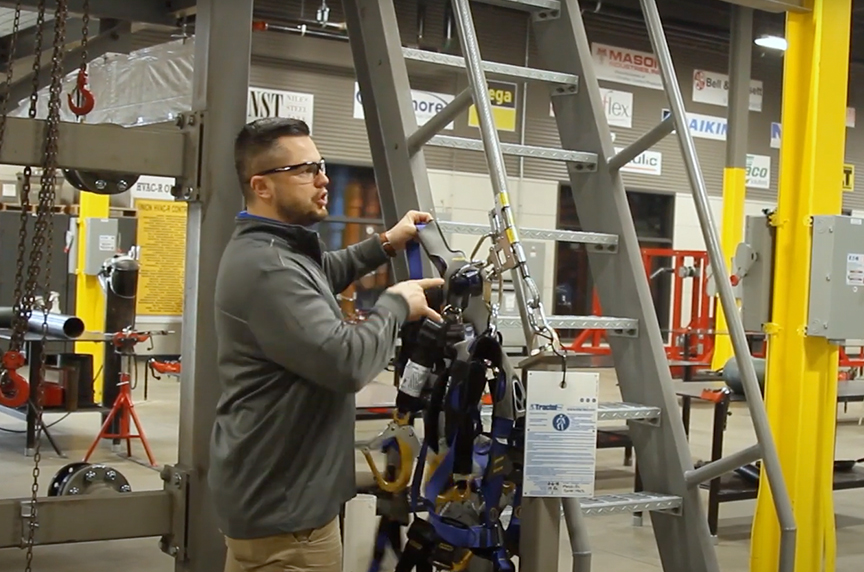
What Is a Rigid Rail Fall Protection System?

Rigid rail fall protection systems (also known as monorail systems or enclosed track systems) are an overhead fall protection system where the wire rope and worker are attached to a trolley that spans the length of a ceiling.
Usually used as a permanent fall protection solution, rigid systems can be found in general industry, mills, factories, and manufacturing facilities in indoor and outdoor settings. They are also popular for manufacturing and repairing of large vehicles and machines, including:
- Aircraft and aerospace
- Boats, ships, and barges
- Trains and railcars
- Trucks and trailers
- Buses and RV
Rigid rail systems can be as complex or simple as you would like them to be. They can come in standard kits, or they can be designed for specific applications.
Should You Galvanize Rigid Track Systems?
Depending on the environment, the interior of the track can experience rust and corrosion. This is especially common in outdoor applications with high heat and humidity, such as Florida, Georgia, South Carolina, and the entirety of the Southeastern United States.
If you were to galvanize your enclosed track system, you can expect a 10% increase on your final price.
In addition to humid, outdoor environments, anyone working in chemical plants or chemical storage facilities would benefit from galvanizing their enclosed tracks.
<!–[if lte IE 8]><![endif]–>
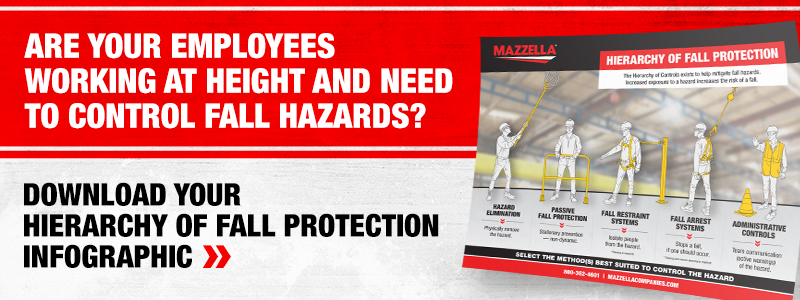 hbspt.cta.load(3336966, ‘43336e9f-4baf-453c-841c-394decc4e070’, {“useNewLoader”:”true”,”region”:”na1″});
hbspt.cta.load(3336966, ‘43336e9f-4baf-453c-841c-394decc4e070’, {“useNewLoader”:”true”,”region”:”na1″});
How Can You Decide Between a Lifeline and Enclosed Track?
While both systems are great for improving employee safety, they do not fit neatly into every application. While researching potential solutions, ask yourself the following questions:
What Is Your Budget?
If you’re working with a tight budget, lifelines may be the best option for you, as they’re significantly cheaper than eclosed tracks.
Additionally, depending on your environment, you wouldn’t have to pay to galvanize a lifeline system—unlike enclosed tracks. The installation cost for lifeline systems is significantly less too.
What Is Your Application?
Are you in an environment where abrasions are more likely to happen? If so, you should probably use an enclosed track.
Enclosed tracks would also be ideal for compact, shorter, repetitive environments. Meanwhile, if your application spans the entire roof of a warehouse or factory, lifelines would be a better best choice.
If you’re working in a vertical application (wind turbines, grain silos, water towers, etc.) with ladders, your best option is going to be a vertical lifeline system.
Your application will also dictate how much fall clearance you need. Rigid tracks will have a much better fall clearance than a wire rope lifeline.
Is This a Temporary or Permanent Installation?
Since lifelines are easier to install and remove from a job site, they would be the best option for temporary projects. Meanwhile, given the time and effort that takes to install them, enclosed tracks would be better for permanent installations with repetitive tasks.
Conversely, many lifeline systems are designed to be moved around as a project progresses.
Temporary lifelines will be predominately used on construction sites and turn arounds at plants. Permanent systems will be installed for daily manufacturing processes and routine maintenance that occurs often.
While lifeline systems have their place in temporary and permanent applications, rigid systems are much better option for permanent applications.
Is Customization Needed?
Do you need curved tracks? Do you need a passable system for multi-worker projects? Would you like to have different hangers for sloped rooftops? If so, rigid systems are the way to go.
The most common offering is a passable system, which allows you to have multiple tracks on a system to help each workers seamlessly go back across from each other. We’ve even seen companies use up to four tracks on a header.
Furthermore, there’s a wide variety of rigid rail systems out on the market for just about any indoor and outdoor application. Some of the more common systems we work with are:
- Ceiling mounted monorail systems: great for production and warehouse facilities
- Inverted freestanding systems: great for work on rail cars, trucks, trailers, and outdoor environments. Freestanding systems come in T-, U-, and L-frame designs
- Traveling bridge systems: these systems can be either ceiling-mounted or freestanding and are a good fit for aircraft hangers
While there are customization offerings for lifeline systems, they aren’t as comprehensive as what’s available for enclosed systems.
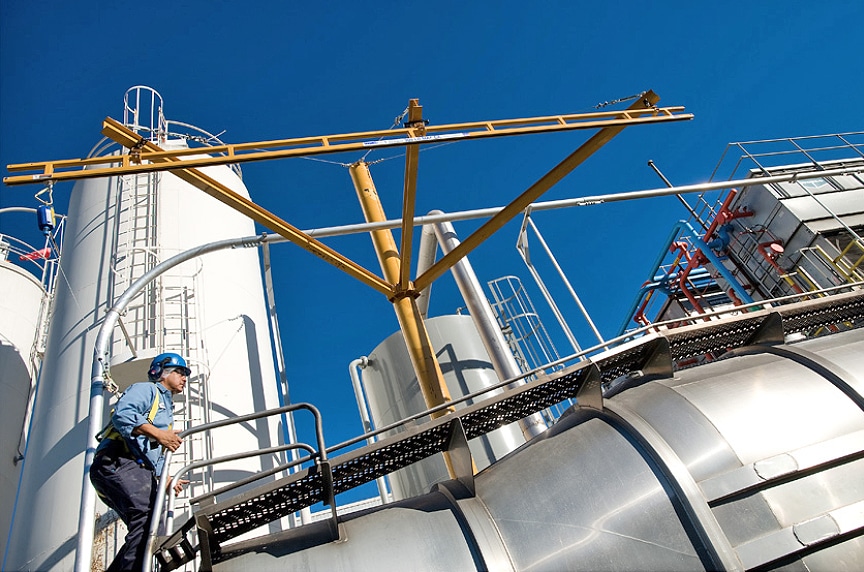
Is Training Required for Lifeline and Rigid Systems?
Training is always required for workers using a lifeline or rigid track system.
During training, users will learn:
- What the procedures are to use the specific lifeline they have installed
- The daily inspection criteria and what to look for
- Limitations of the system
How Can You Improve Your Fall Protection Practices?
Staying OSHA compliant, especially with your fall protection, is not an easy task. We know this because fall protection violations are usually cited as one of the most frequent OSHA violations.
Both rigid and lifelines systems are built to do the same thing: keep your workers safe while working at heights. However, it is ultimately on you to decide the system that best fits your work environment.
Whether you pick a lifeline or enclosed track system, we hope this article helped you understand their best applications and the key OSHA standards you be aware of.
Our fall protection team has decades of experience installing and inspecting fall protection systems for just about every type of industry. If you want to learn more about fall protection best practices, download our free Hierarchy of Fall Protection Visual Guide.
Furthermore, explore our basic fall protection course if you feel your workers need training.
<!–[if lte IE 8]><![endif]–>
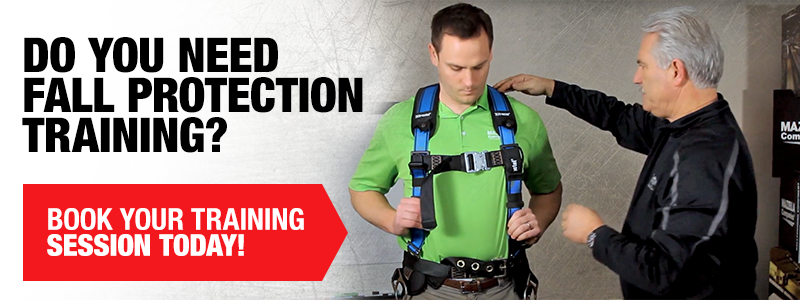 hbspt.cta.load(3336966, ‘b77599df-3a55-4698-bfa2-7336f00b7918’, {“useNewLoader”:”true”,”region”:”na1″});
hbspt.cta.load(3336966, ‘b77599df-3a55-4698-bfa2-7336f00b7918’, {“useNewLoader”:”true”,”region”:”na1″});
Copyright 2024. Mazzella Companies.
